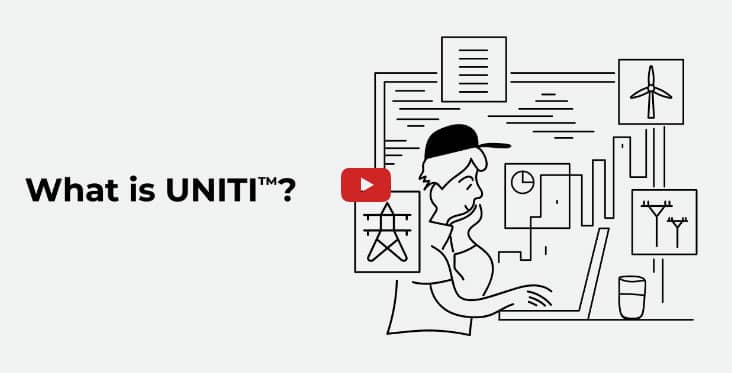Every industry faces challenges while working toward modernization, and electric power transmission and distribution companies are working toward a unique set of objectives, with many aiming to advance their network or achieve carbon neutrality. However, the first step in working towards these is understanding what processes and systems need to be updated first.
To illustrate, for an energy company to pursue a mission like achieving carbon neutrality within 25 years, broadening energy grid access worldwide, or transitioning to renewable energy sources, they must first assess the gaps between their current operations and the desired goal state. There are challenges the utility industry is facing pertaining to the overall management of assets, and how teams can leverage knowledge about their current needs and opportunities for upgraded systems to set them on the path to success.
Current State of the Industry
In the utilities industry, the challenge of adaptation looms large, with many operators using the same basic systems and processes that have been in place for decades. To maintain the resiliency of their networks, utility generators, transmitters, and distributors must manage strict and effective inspection schedules, reporting, and data collection; a manual, human-lead activity that requires an abundance of person-hours to perform.
Inspections of power generation facilities like wind and solar farms, and transmission and distribution lines, are usually done at regular intervals or when damage and operational interruptions occur. However, since many times only problematic infrastructure is recorded, maintenance and repairs are reactionary instead of proactive, and infrastructure is often left vulnerable.
The current state of the industry demonstrates an opportunity to modernize the data collection and aggregation system through condition based monitoring, enabling preemptive repair and replacement. It’s important to consider that reactive repairs that are only completed after the issues have impacted customers and caused widespread service disruption are not only damaging to reputation and reliability, but also to the bottom line. Taking a data-first approach to understanding infrastructure conditions and uncovering risks can reduce downtime and maintenance costs, optimize repair schedules, and foster a safer, more efficient operating environment.
Why is this important? Who does it impact?
If data collected during infrastructure inspections isn’t properly recorded and organized in a way that enables retrieval and modeling, it’s difficult to identify deteriorating conditions. As a result, assets may not receive the due care and attention necessary for proper function. Because of these missing mechanisms, it’s not uncommon for utilities to run assets to failure. Typically, this means distribution poles, transmission towers, and sometimes wind generation turbines are only replaced once they become non-functional.
Ultimately, this workflow often leaves assets vulnerable, which impacts our ability to provide communities around the world with reliable access to electricity. While inadequate grid infrastructure impacts customers globally, it disproportionately affects people in underprivileged and economically disadvantaged areas, including remote and rural communities. Our ability to defend against failing hardware, build a sustainable future, and bring equitable access to electricity depends on resilient infrastructure and adequate preservation of assets.
What’s next?
There’s no doubt that energy teams are innovative and talented, although the fact remains that the decades-old tooling and infrastructure systems often hinder rather than facilitate growth. This leaves businesses grappling with the question of where to start. It’s clear there has to be automation in business processes, maturity around digitization, and a movement around creating a baseline understanding of current gaps, so we can take advantage of new solutions.
Considerations for Operators:
As preparation begins for initial assessments of an organization’s current gaps and opportunities for modernization, the following should be considered:
Gain Command: Gain control over data, in conjunction with how decisions are made, to enable a more comprehensive view of operations, current processes, and empower executive teams to understand data-led opportunities and steer the organization effectively.
- Digitize: As part of the first step, initiate a fundamental shift from traditional, paper-based processes to a more efficient and data-driven approach. To start this process, streamline asset management and inspection procedures. This will set you on the path to move from a “break-fix” model to condition- based monitoring.
Think Holistically: Consider all aspects of the organization’s operations in order to understand how they work together, and how automating or digitizing one aspect would impact other aspects.
- Expand and Aggregate Data: Explore additional data sources, as the more data that can be captured and integrated, the more informed decisions can be made. Expansion includes data from sensors, system data, IoT devices, and historical record. Broader aggregated data pools can provide deeper insights into asset performance.
Address Issues: Analyze factors that are true hindrances to progress, and implement solutions one step at a time to work towards the ultimate goal. Here is where you’ll observe the shift towards data-driven decision-making. Identify solutions that use advanced analytics to predict asset maintenance needs, optimize operations, and reduce downtime, leading to cost savings and improved reliability.
Written by Josh Riedy, CEO and Founder of Thread.


